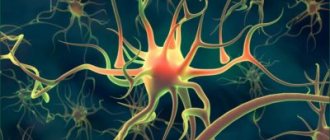A social group is one of the main components of social structure.
People in a social group interact with each other within its boundaries and also participate in intergroup relations. These interactions determine the socialization of the individual, that is, the individual’s involvement in social interaction.
Types of social groups
A social group is a collection of people united according to one or another characteristic. For example, such a sign may be the similarity of living conditions of people (residents of cities, residents of villages and villages), the commonality of needs of people (consumers of household appliances, sports equipment, etc.), joint activities (volunteers, managers, engineers, etc.). ), self-attribution of people to a specific community (Christians, atheists, etc.) and much more.
Classification of social groups
Small and large social groups
Depending on the density of connections between people, as well as on the size of the group, large and small social groups are distinguished
Large social groups are groups of people united by one socially significant feature, consisting of more than several dozen people.
For example, people belonging to the same religion or party, or people of the same profession will form a large social group.
A characteristic feature of a large social group is that a particular member will never be able to come into contact with all the others. For example, one Christian will never be able to get acquainted with all Christians, and one engineer will never be able to meet all the engineers in the country, and even more so in the world, but a Christian or an engineer can contact some members of his group, and these contacts can be very extensive.
Small social groups consist of people united by common activities and in direct personal contact. Small groups are divided into:
a) Primary groups, which are characterized by:
— direct interpersonal contacts of group members;
- high level of emotional attachment of group members to each other;
— it is through these groups that the individual receives his first socialization, assimilates the values and ideals of the society in which he will live.
An example of a small social group would be a family or a group of best friends. Each member of these groups communicates closely with others and can turn to them for moral support; such a group exerts a moral influence on each of its members.
b) Secondary groups, which are characterized by:
— the optionality of emotional relationships between group members;
— the common goal for which the interaction is carried out;
- personality traits in such a group do not matter if the person performs his functions well.
An example of a secondary social group is a large work team that has a common goal - the well-being of the enterprise. Each member of this group has their own responsibilities. There may be friendly, trusting relationships between members of the work team, but this is not a necessary condition for quality work.
Formal and informal groups
Depending on whether groups have formal legal status, they are divided into formal and informal.
| Group type | Formal groups | Informal groups | |
| Definition | An association of people built on the basis of special documents: charters, service instructions, declarations and others. | An association of people that has formed and functions spontaneously; its activities are not regulated by any official documents. | |
| Signs | Members of this group: - committed to achieving a common goal, performing some type of activity; - are in a formal hierarchical subordination; - have clear specifications, everyone does their job; - are not obliged to maintain any relations with each other other than work ones. | — relationships within a group are determined by the individual characteristics of its members; - the group functions on the basis of common goals or interests; — the behavior of group members is, as a rule, regulated by unwritten rules; — the group is held together through the authority of its leader. | |
| Examples | - Production team. - Sport Team. - Military unit. | - Company of friends. — An informal club of fans of the artist/singer. | |
What is human individuality
Individuality is a unique set of personal characteristics of a person, which ensures his natural harmony and versatility. Individuality determines a person’s attitude towards himself, towards the people and things around him, towards his own and other people’s activities.
The socio-psychological paradox lies in the fact that every person wants to be different from others, to express themselves through creativity. But at the same time, everyone fears that others will not be able to understand and accept his self-expression. Therefore, people, as a rule, try to be like everyone else.
The structure of individuality consists of:
- type of temperament;
- a person's appearance;
- personality communication style;
- person's character;
- intellectual abilities of the individual;
- interests and inclinations of a person
A person’s individuality emerges in the course of his life. Everyone has this personality characteristic. It is difficult to find two people who have the same personality characteristics. Even twins have opposite personalities, which indicates the unique individuality of each person.
A person’s individuality is noticeable from infancy. Kids have differences in appearance and temperament. Even children's crying is different.
Social processes in modern Russia (grade 10)
During the development of democratic and market reforms, the social stratification of Russian society has undergone a significant transformation. Firstly , the very nature of the stratification system has changed radically. If in Soviet society the features of an etatocratic system, built on power hierarchies and formal ranks, prevailed, then in modern Russian society the formation of a stratification system occurs on an economic basis, when the main criteria are the level of income, ownership of property and the ability to carry out independent economic activities. Secondly, a fairly large entrepreneurial layer has emerged, the highest representatives of which not only constitute a significant part of the upper economic class, but in a number of cases are also included in the country's political elite. The transition to a market economy has given rise to qualitatively new status groups that have economic freedom and aspire to the highest places in the social hierarchy. Thirdly, during the reforms, new prestigious types of activities appeared, which significantly changed the socio-professional stratification system. Thus, the prestige of entrepreneurial, commercial, financial banking, managerial, legal and some other types of activities (advertising, marketing, real estate transactions, etc.) has sharply increased.
The influence of society on personality
Being in society, a person experiences pressure from others. Society influences the formation of a person’s system of value orientations and influences his actions.
The behavior of an individual is regulated not only by his own volitional efforts, but also by public opinion.
A person feels happy only in those moments when he can do what he really likes, while feeling understanding and support from loved ones.
Youth in modern society (grade 11)
The awareness of youth as a special stage in a person’s life, and of youth as a separate social group, occurred relatively recently by historical standards. In a traditional society, a person entered adulthood directly from childhood, without any intermediate stages. There were special rites of passage into adulthood. About a century ago, scientific study of the problems of young people began. Initially, the biological, physiological approach prevailed. The main reason for personality changes in adolescence was associated with human puberty. Gradually, more and more attention began to be paid to the role of social factors: the influence of the surrounding cultural environment, the nature of upbringing in the family and school, the influence of friends. It is social formation, the mastery of basic social roles that began to be considered as the main vector of personality development in adolescence. Typically, there are two stages on the path to growing up: adolescence and adolescence. However, the age limits for each stage are quite vague. In modern Russian psychology, the age of 11–15 years is most often considered to be adolescence, and the age of early adolescence is 16–18 years, but in some cases the upper limit is 20 years of age. From Western psychology the term “teenager” came to us, covering young people from 13 to 19 years old, that is, at the age designated by numerals ending in “teen” (thirteen–nineteen).
Youth as a social group (grades 10-11)
Youth is a group united on the basis of social and demographic characteristics, characterized by certain age characteristics (people from 16 to 25 years old).
It is at the age of 16–25 that a person’s personality is finally formed and his socialization is completed. This is the period when a person becomes socially mature, independent, enters the adult world and adapts to it.
Youth as a social group has a number of social characteristics:
- the need to master new social roles (learning and accepting social stereotypes and norms of behavior accepted in society);
- great opportunities for social mobility (prospects for professional growth, educational opportunities);
- instability, transitional situation (“searching for oneself”, frequent job changes, getting an education).
In addition, young people are distinguished by a specific set of psychological qualities:
- inconsistency of the inner world (due to the fact that the worldview of the individual during this period was not yet fully formed);
- unstable psyche, high level of emotionality;
- low tolerance (lack of tolerance, radical views);
- the desire to stand out from the crowd, to be different from the rest;
- the presence of a youth subculture.
Personality structure
The personality structure is formed by the characteristics of an individual acquired in the process of social interaction. These include:
- developed willpower;
- willingness to take responsibility for your words and actions;
- independence;
- self-discipline;
- self-organization;
- high level of self-control:
- high level of morality.
Psychologists have combined the characteristics of personality, creating its socio-psychological structure:
Social and psychological structure of personality
Development of social roles in adolescence (grades 10-11)
Adolescence is a stage of personality development that usually begins at 11–12 and lasts until 16–17 years, the period when a person enters “adulthood.” At this time, the teenager’s life self-determination occurs, plans for the future are formed. There is an active search for one’s “I” and experimentation in different social roles. The teenager changes himself, tries to understand himself and his capabilities. The demands and expectations placed on him by other people change. He is forced to constantly adjust, adapt to new conditions and situations, but this does not always happen successfully. The internal crisis of a teenager’s self-esteem arises in connection with the expansion and growth of opportunities, on the one hand, and the preservation of child-school status, on the other. The young man’s worldview is being formed. Characteristic is the desire for leadership in a peer group. So, the social roles of youth: child for parents; student for teacher; leader in a peer group; conscript for the military registration and enlistment office; athlete in the section; older brother or sister, etc.
Small
This is a small community of people who enter into communication. emotional connections between the participants , and their interaction is regulated by general norms and principles.
Kinds
Classification:
- by method of education: spontaneous, organized,
- by the presence of connections: real, conditional,
- by social status: official, unofficial,
- by level of development: low level, high level,
- by personal significance: reference, membership groups,
- by social significance: positive, asocial, antisocial.
Examples
A classic example is the family . This is not only a family consisting of parents and children, but also the entire set of relatives united by ties of consanguinity, marriage and emotional attachments.
The criterion for a person to belong to a family is his participation in interpersonal interaction with other relatives.
Youth subculture (grade 10)
The socio-psychological characteristics of youth as a social group are also manifested in the existence of a specific youth subculture (from Latin, sub - a particle indicating being under something, near something). The youth subculture is understood primarily as the culture of a certain young generation that has a common lifestyle, behavior, group norms, values and stereotypes. Youth consciousness is the basis, the bearer of a special subculture, secondary to the cultural environment of the adult population. As a special subculture, it has its own goals, values, ideals, illusions, which do not always and accurately replicate those dominant in adult society; it has its own language. In the youth subculture, as a complex and multidimensional phenomenon, in turn, smaller, but nevertheless strictly defined subcultures (punks, ravers, rockers, skins, acid youth, football and music fans, etc.) are distinguished. At the same time, it is possible to identify common features under the influence of which it is formed.
Individual behavior
Behavior is a special form of activity of the human body, which masters the environment. In this aspect, behavior was considered by I. Pavlov. It was he who introduced this term. With the help of this term, it has become possible to display the sphere of relationships between an individual interacting individual and the environment in which he exists and interacts.
Individual behavior is the individual’s reaction to any changes in external or internal conditions. It can be conscious or unconscious. Human behavior develops and is realized in society. It is associated with goal setting and speech regulation. The behavior of an individual always reflects the process of his integration into society (socialization).
Any behavior has its reasons. It is determined by the events that precede it and cause a certain form of manifestation. Behavior is always purposeful.
An individual's goals are based on his unmet needs. Those. any behavior is characterized by the goal that it seeks to achieve. Goals perform motivating, controlling and organizational functions and are the most important management mechanism. To achieve them, a number of specific actions are performed. Behavior is also always motivated. Whatever the behavior, challenging or detached, it necessarily contains a motive that determines the immediate form of its manifestation.
In the process of technological progress in modern science, another term has appeared - virtual behavior. This type of behavior combines theatricality and naturalness. Theatricality is due to the illusion of natural behavior.
The behavior of an individual has the following characteristics:
— level of activity (initiative and energy);
— emotional expressiveness (the nature and intensity of manifested affects);
- pace or dynamism;
- stability, which consists in the constancy of manifestations in different situations and at different times;
— awareness based on understanding one’s behavior;
- arbitrariness (self-control);
— flexibility, i.e. changes in behavioral reactions in response to environmental transformations.











